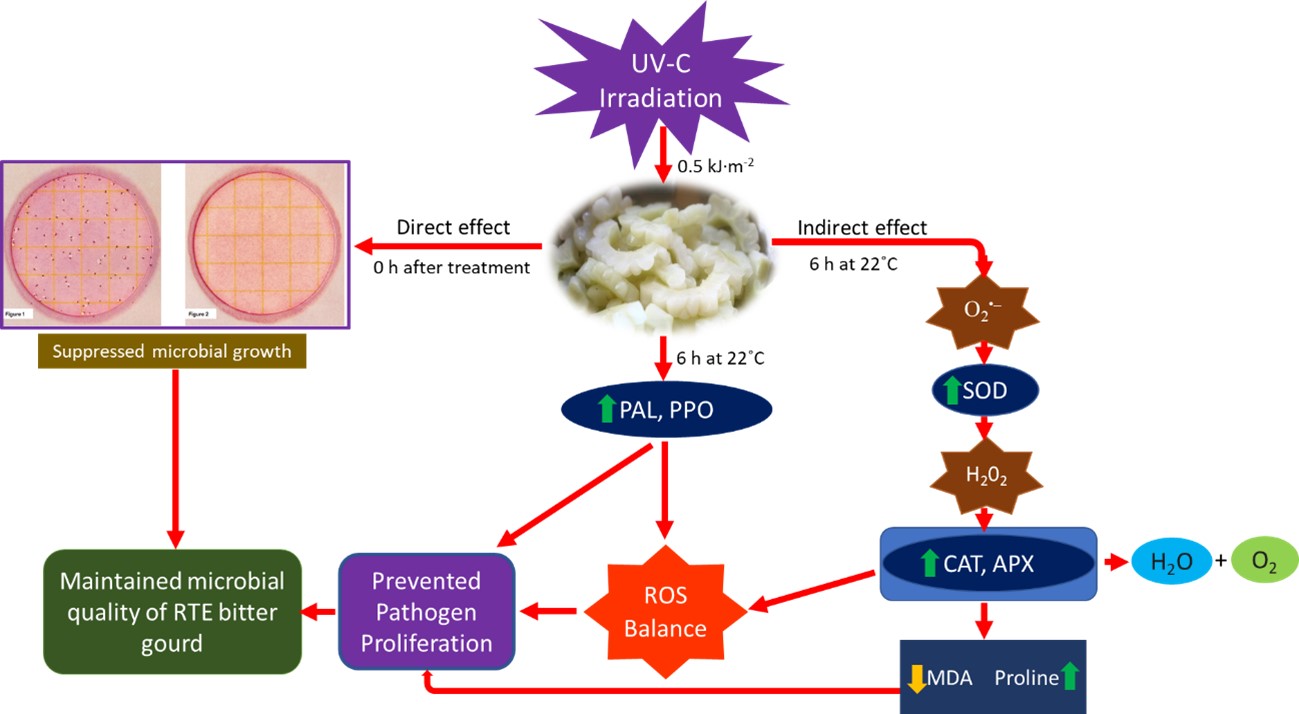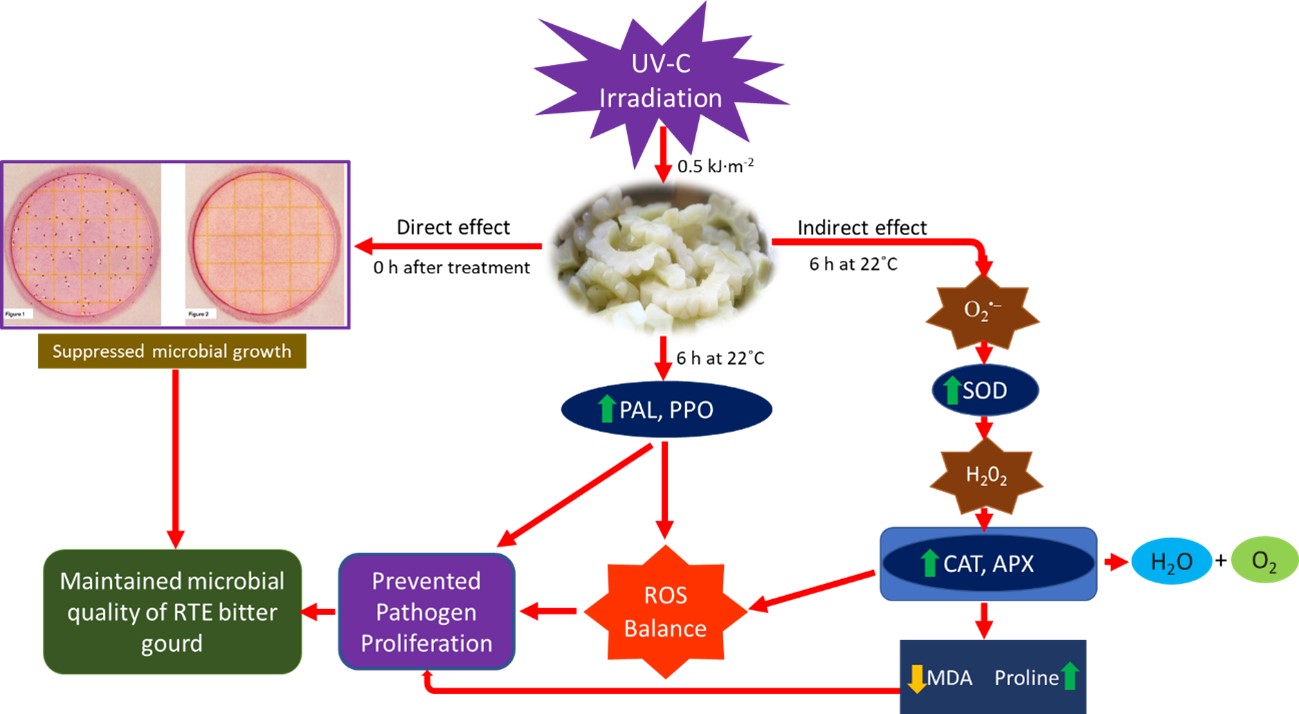UV-C及低溫處理於降低鮮切苦瓜微生物風險之應用
截切生鮮蔬果可維持天然營養成分、方便食用,但也容易老化褐變、微生物污染,導致商品價值下降、縮短櫥架壽命,甚至有食品安全上的顧慮。首先使用次世代定序分析鮮切苦瓜表面之微生物相 (microbiota),包含造成食安問題常見的菌種。為了降低鮮切苦瓜之微生物風險,採用UV-C及4℃ 低溫處理,再於室溫放置6小時模擬自助餐點,可維持鮮切苦瓜表面微生物數量符合食品規範。UV-C處理使鮮切苦瓜內過氧化氫 (drogen peroxide)、丙二醛 (malondialdehyde) 含量降低、脯胺酸 (proline) 含量上升、抗氧化酵素如超氧歧化酶 (superoxide dismutase)、抗壞血酸過氧化酶 (ascorbate peroxidase)、過氧化氫酶 (catalase)、苯丙烷類 (phenylpropanoid) 生合成關鍵酵素苯丙胺酸脫氨裂解酶 (phenylalanine ammonia-lyase) 及多酚氧化酶 (polyphenol oxidase) 等活性上升,顯示UV-C處理具有殺菌及提升苦瓜細胞抗氧化能力,進而抑制微生物孳生,達到降低表面微生物數量的效果。全文刊登於 Horticulturae期刊。
Baligad, J.L., Y.-Y. Do, and P.-L. Huang. 2023. The effects of UV-C irradiation and low temperature treatment on microbial growth and oxidative damage in fresh-cut bitter gourd (Momordica charantia L.). Horticulturae 9:1068. (21 pages) doi:10.3390/horticulturae9101068. (SCI)

UV-C處理具有殺菌、提升苦瓜細胞抗氧化能力的效果,進而降低表面微生物數量。
研究全文:https://doi.org/10.3390/horticulturae9101068
The Effects of UV-C Irradiation and Low Temperature Treatment on Microbial Growth and Oxidative Damage in Fresh-Cut Bitter Gourd (Momordica charantia L.)
Fresh-cut fruits and vegetables are convenient and retain maximum nutrients. However, even minimal processing accelerates product deterioration and reduces food safety due to microbial infection. In this study, the effects of UV-C irradiation, low temperature treatment, and their combination on the microbial risk of fresh-cut bitter gourd were evaluated. Firstly, next-generation sequencing technology was utilized to identify microorganisms on the surface of fresh-cut bitter gourd after 12 h of exposure to room temperature, and a total of 34 bacterial species were identified. Subsequently, fresh-cut bitter gourd treated with UV-C or/and 4 °C and then kept at room temperature for 6 h was assessed for its viable bacterial count. The results showed that both 0.5 and 1.5 kJ·m−2 UV-C irradiation significantly inhibited microbial growth compared to 4 °C and the no treatment control. Meanwhile, no significant differences were observed between UV-C and the combined treatments. Lower doses of UV-C irradiation reduced hydrogen peroxide and malondialdehyde content, increased the proline level, and improved the activities of antioxidant enzymes such as superoxide dismutase, ascorbate peroxidase, catalase, and critical enzymes involved in the phenylpropanoid pathway, such as phenylalanine ammonia-lyase and polyphenol oxidase. This suggests that UV-C irradiation alone can effectively reduce bacterial contamination in fresh-cut bitter gourd to an acceptable level.
Baligad, J.L., Y.-Y. Do, and P.-L. Huang. 2023. The effects of UV-C irradiation and low temperature treatment on microbial growth and oxidative damage in fresh-cut bitter gourd (Momordica charantia L.). Horticulturae 9:1068. (21 pages) doi:10.3390/horticulturae9101068. (SCI)

UV-C can be used effectively to maintain microbial safety and extend the shelf life of fresh-cut bitter gourd.
More information: https://doi.org/10.3390/horticulturae9101068



